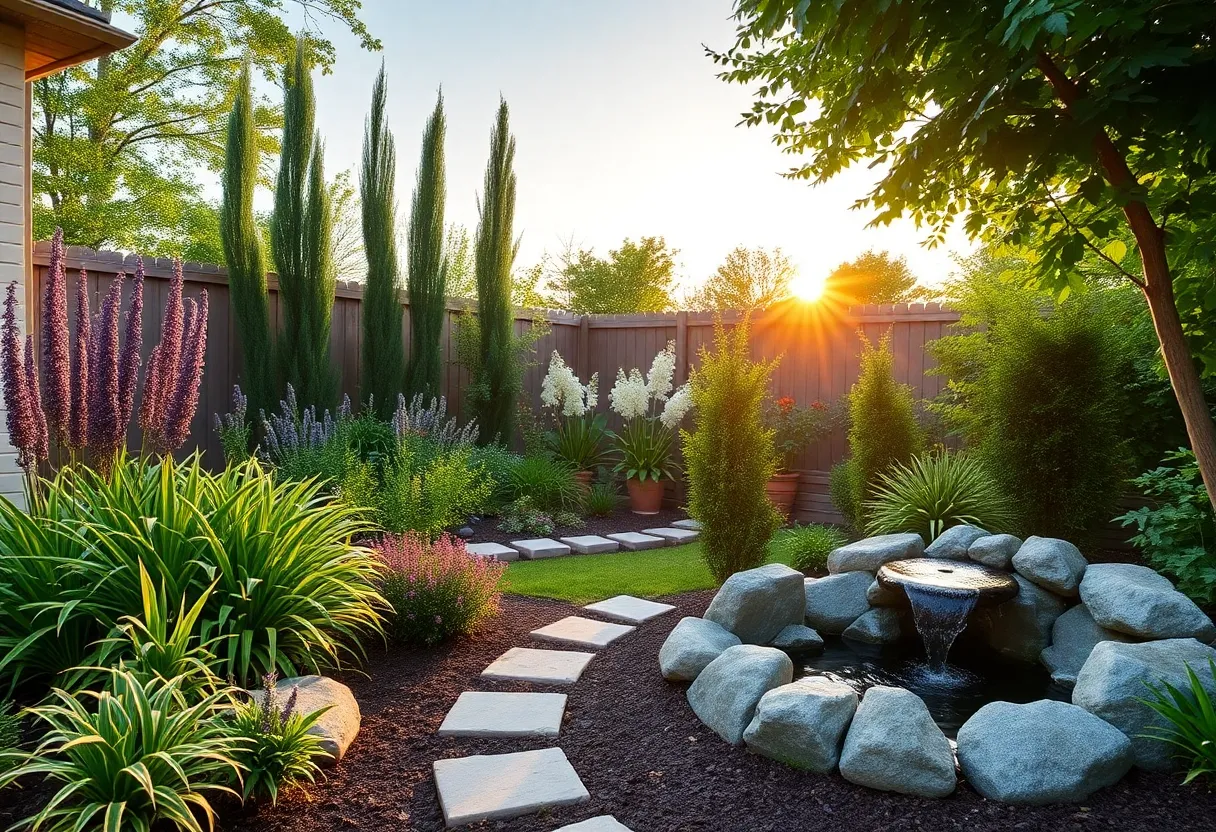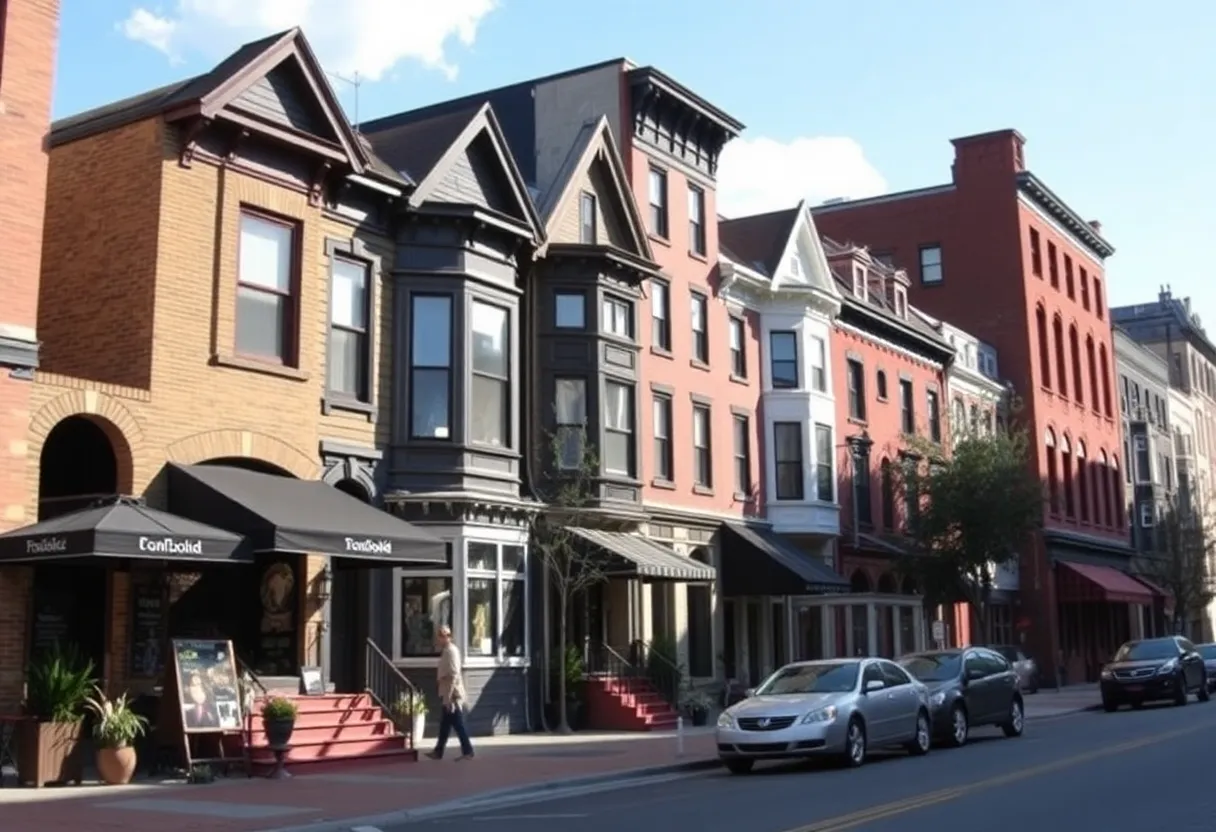How to Turn Your Philadelphia Backyard into a Serene Garden Retreat
Transforming your Philadelphia backyard into a tranquil garden oasis requires strategic planning, site-specific plant selection, and mindful design choices. This comprehensive guide offers step-by-step insights into creating a personalized outdoor sanctuary that suits Philadelphia’s distinct climate, soil conditions, and aesthetic preferences.
Understanding Philadelphia’s Climate and Soil Conditions
Success starts with understanding your local environment. Philadelphia features a humid subtropical climate characterized by hot, humid summers and cold, damp winters. The city generally falls within USDA Hardiness Zone 7a, which means winter lows can reach around 0°F (-18°C).
Soil types are highly variable. Older neighborhoods tend to feature heavy clay soil that is prone to compaction, while newer developments often have sandy, well-drained soil. Conducting a soil test is essential. It will determine pH, drainage capacity, and nutrient levels, guiding appropriate amendments such as organic matter, compost, or soil conditioners to optimize plant growth.
Keep in mind: Philadelphia’s urban setting may influence soil quality. Contaminants or compacted layers might be present, requiring specialized remediation to establish a healthy garden foundation.
Design Principles for a Serene Garden Retreat
Achieving a peaceful garden involves deliberate design considerations to foster harmony and relaxation:
- Establish a Focal Point: Incorporate a water feature, sculpture, or select a standout plant. A fountain, for example, provides soothing sound, while a large specimen tree adds visual interest.
- Create Defined Spaces: Use pathways, hedges, or decorative screens to organize areas for lounging, dining, or meditation, thereby enhancing privacy and flow.
- Incorporate Vertical Elements: Trellises, arbors, or vertical gardens maximize space and add visual depth, especially beneficial for smaller yards.
- Select a Harmonious Color Palette: Use plantings and materials that complement each other, creating an overall calming environment rather than overwhelming the senses.
Thoughtful lighting and seating placement can extend usability into evening hours, while soft landscape features promote a sense of escape from urban noise.
Choosing the Right Plants for Your Garden
Plant selection is fundamental. Focus on native and adaptable species suited for Philadelphia’s climate and soil conditions. Prioritize plants that require minimal maintenance and attract pollinators, enriching your garden’s environment.
Native and Adaptable Perennials
- Wild Bergamot (*Monarda fistulosa*): Lavender-hued flowers with aromatic foliage support bees and butterflies. Prefers full sun to partial shade with well-drained soil.
- Black-eyed Susan (*Rudbeckia hirta*): Bright yellow blooms support pollinators, bloom from early summer to fall, and tolerate drought conditions.
- New England Aster (*Symphyotrichum novae-angliae*): Vibrant purple flowers in late summer and fall; thrives in full sun and moist, well-drained soil.
- Little Bluestem (*Schizachyrium scoparium*): Ornamental grass with blue-green foliage turning vivid red in autumn; drought-tolerant once established.
- Shenandoah Switchgrass (*Panicum virgatum ‘Shenandoah’*): Burgundy-tinted leaves and delicate plumes provide seasonal interest; supports ecosystem diversity.
- Amsonia (*Amsonia tabernaemontana*): Fine-textured leaves with pale blue spring flowers; transitions to golden hues in fall.
- Creeping Phlox (*Phlox subulata*): Low-growing ground cover boasting a carpet of spring blossoms that attract pollinators.
- Redbud (*Cercis canadensis*): Pink blossoms herald spring; heart-shaped leaves yield bright yellows in fall, adding vertical appeal.
- Southern Magnolia (*Magnolia grandiflora*): Evergreen with large fragrant white flowers; provides year-round focal interest.
- Blue False Indigo (*Baptisia australis*): Spikes of blue flowers supported by silvery-green foliage; drought-tolerant with striking seed pods.
Additional Shrubs and Vines
- Oakleaf Hydrangea (*Hydrangea quercifolia*): Brings large white flowers and red to purple fall foliage; ideal for shaded areas.
- Boston Ivy (*Parthenocissus tricuspidata*): Foliage transforms to vibrant red in fall; excellent for covering walls or fences.
- Black Lace® Elderberry (*Sambucus nigra ‘Black Lace’*): Dark purple foliage with pink flower clusters; adds contrast and supports pollinators.
- Korean Spice Viburnum (*Viburnum carlesii*): Sweetly fragrant blooms in spring; rounded shape and appealing foliage brighten shaded corners.
Trees for Structure and Seasonal Interest
- Weeping Cherry (*Prunus subhirtella ‘Pendula’*): Cascading branches and early spring blossoms add delicate elegance.
- Redbud (*Cercis canadensis*): As above, a small ornamental tree with striking flowers.
- Meyer Lemon (*Citrus × meyeri*): Potted or ground-planted, offering fragrant blooms and edible fruit in containers.
Vines and Climbing Plants
- Star Jasmine (*Trachelospermum jasminoides*): Fragrant white flowers bloom in summer evenings, perfect for trellises.
- Honeysuckle (*Lonicera spp.*): Supports pollinator activity; fragrant flowers attract hummingbirds and bees.
- Night Phlox (*Zaluzianskya capensis*): Blooming at night with a vanilla scent, supporting nocturnal pollinators.
Implementing Your Garden Design
After selecting plants, focus on layout and assembly:
- Arrange focal points first, ensuring they draw the eye and anchor the space.
- Design pathways to connect zones, using pavers, gravel, or natural materials fitting the aesthetic.
- Layer plants with varying heights—ground covers, mid-layer shrubs, and taller trees—creating depth and visual interest.
- Utilize vertical structures for climbers and hanging planters, especially where space is limited.
- Incorporate soft lighting for ambiance, such as solar lanterns or string lights, to extend usability at night.
Furnishings should promote relaxation — comfy chairs, loungers, and shaded nooks invite lingering. Incorporate natural materials to blend seamlessly with landscape elements.
Maintenance and Sustainability Practices
A serene garden is also about low-maintenance habits:
- Use native plants to reduce watering and fertilization needs.
- Implement mulching to conserve moisture and suppress weeds.
- Practice companion planting to deter pests naturally.
- Design with drought-tolerant species to withstand seasonal dry periods.
- Regularly prune and remove spent blooms to encourage healthy growth and continuous flowering.
Incorporate rainwater harvesting systems and composting to sustain the environment and reduce resource use, aligning with eco-conscious principles.
Additional Tips for Philadelphia Gardeners
Given the urban environment, consider container gardening for flexibility and microclimate control. Use raised beds to improve drainage in heavy clay soils.
Protection from frost is essential—cover sensitive plants during winter or bring potted plants indoors.
Maximize shade areas with shade-tolerant plants and shaded seating zones to provide relief during hot summer days.
Addressing local challenges such as pests, pollution, and limited space will ensure longevity and enjoyment of your serene space.
Frequently Asked Questions
How do I select plants suitable for Philadelphia’s climate?
Choose native species and those labeled as adaptable for USDA Zone 7a. Focus on plants tolerant of humidity, seasonal droughts, and occasional cold snaps. Prioritize plants that thrive in full sun or partial shade based on your yard’s conditions.
What is the best way to incorporate privacy into my garden design?
Use tall hedges, climbing vines on trellises, or arbors positioned strategically to screen views. Layering plants with different heights also enhances privacy while creating a lush environment.
How can I make my garden more sustainable?
Implement native planting, use rainwater harvesting, apply mulching, and avoid chemical pesticides. Opt for drought-resistant species and organic fertilizers to minimize environmental impact.
What maintenance routines are essential for a serene garden?
Regular watering, mulching, pruning, and deadheading are vital. Keep pathways clear, monitor for pests, and replace seasonal plants as needed to maintain a peaceful and healthy environment.
Key Features of a Serene Philadelphia Garden
| Feature | Description | Benefit |
|---|---|---|
| Climate Adaptability | Plants chosen are suited for Zone 7a, supporting resilience and longevity. | Ensures easier maintenance and durability through seasonal changes. |
| Native Species | Favor plants that naturally thrive in local conditions. | Supports local ecosystems and reduces resource needs. |
| Vertical Elements | Trellises, arbors, and hanging gardens maximize space. | Creates visual interest and privacy in compact yards. |
| Relaxation Features | Water features, cozy seating, and soft lighting. | Enhances tranquility and extends usability into night hours. |
| Sustainable Practices | Rainwater harvesting, mulching, native planting. | Reduces environmental footprint and lowers ongoing costs. |
| Seasonal Interest | Trees, shrubs, and perennials with colorful blooms and foliage. | Maintains visual appeal throughout the year. |
Author: STAFF HERE PHILADELPHIA WRITER
The PHILADELPHIA STAFF WRITER represents the experienced team at HEREPhiladelphia.com, your go-to source for actionable local news and information in Philadelphia, Philadelphia County, and beyond. Specializing in "news you can use," we cover essential topics like product reviews for personal and business needs, local business directories, politics, real estate trends, neighborhood insights, and state news affecting the area—with deep expertise drawn from years of dedicated reporting and strong community input, including local press releases and business updates. We deliver top reporting on high-value events such as Mummers Parade, Philadelphia Flower Show, and Thanksgiving Day Parade. Our coverage extends to key organizations like the Greater Philadelphia Chamber of Commerce and United Way of Greater Philadelphia, plus leading businesses in telecommunications, food services, and healthcare that power the local economy such as Comcast, Aramark, and Children's Hospital of Philadelphia. As part of the broader HERE network, we provide comprehensive, credible insights into Pennsylvania's dynamic landscape.





